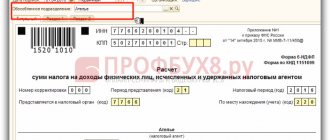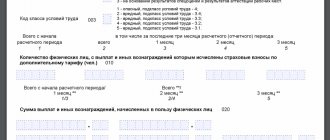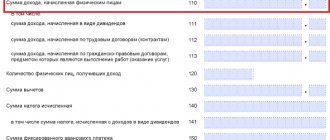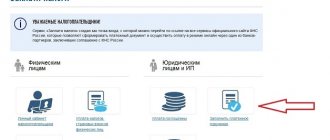At the moment when you register as an individual entrepreneur, you need to understand that you now need to pay tax, fill out a declaration and other documents for the tax office, funds and other government agencies. But how to pay this tax and where to pay it is completely unclear to some.
This service can make running an individual entrepreneur a lot easier, try it to minimize risks and save time.
For those who are faced with such a problem for the first time, you need to understand that no one will do anything for you. It is you who must submit returns and pay taxes on time, otherwise you will receive additional costs in the form of fines and penalties. Therefore, we boldly go into battle, do not hesitate to communicate with the tax office - it is important for you to find out all the information.
At a minimum, individual entrepreneurs have the obligation to pay fixed contributions for themselves and tax (STS or UTII - depending on what you choose, but you can choose HERE). We have already told you how to calculate them and how to fill out declarations.
- How to fill out the simplified taxation system 6% “Income” declaration
- How to fill out the simplified taxation system “Income minus expenses” declaration
- How to fill out a UTII declaration
What taxes does an individual entrepreneur pay?
In fact, the simplified tax system (tax base - income) seems to be one of the simplest taxation systems. The individual entrepreneur requires a minimum of effort in keeping records and calculating taxes.
An individual entrepreneur who has chosen the simplified tax system (tax base is income) pays the simplified tax system at a rate of 6% (a subject of the Russian Federation may reduce it for some types of activities). At the same time, individual entrepreneurs are exempt from paying personal income tax in terms of income from business activities, VAT and property tax (with the exception of real estate that is subject to property tax in a special manner, based on their cadastral value). The individual entrepreneur does not keep accounting records.
In order to calculate the taxable amount of income, individual entrepreneurs are required to keep records of income in the book of income and expenses of organizations and individual entrepreneurs using the simplified taxation system (Article 346.24 of the Tax Code of the Russian Federation). The form of such a Book is approved by Order of the Ministry of Finance of Russia dated October 22, 2012 N 135n. The book is a register of documents on the basis of which the amount of income is determined. The book also records the payment of insurance premiums, which reduces the amount of tax. The main source of data for filling out the Book of our young entrepreneur is the current account statement for the corresponding period.
BCC according to the simplified tax system “income” 6% - 18210501011011000110.
A template for filling out a payment order can be generated using the service on the nalog.ru website: https://service.nalog.ru/payment/payment.html. The payer needs to select the type of payment and the service will offer KBK.
In addition, the individual entrepreneur must pay for himself the amounts of insurance contributions to the Pension Fund of the Russian Federation and the Federal Compulsory Medical Insurance Fund of the Russian Federation:
1) insurance contributions for compulsory pension insurance in the amount determined in the following order:
- if the payer’s income for the billing period does not exceed 300,000 rubles, - in a fixed amount of 26,545 rubles for the billing period of 2021 , 29,354 rubles for the billing period of 2021, 32,448 rubles for the billing period of 2020;
- if the payer’s income for the billing period exceeds 300,000 rubles, - in a fixed amount of 26,545 rubles for the billing period of 2021 (29,354 rubles for the billing period of 2019, 32,448 rubles for the billing period of 2021) plus 1, 0 percent of the payer’s income exceeding 300,000 rubles for the billing period . In this case, the amount of insurance contributions for compulsory pension insurance for the billing period cannot be more than eight times the fixed amount of insurance contributions for compulsory pension insurance established by paragraph two of this subclause (26,545 * 8 = 212,360 rubles);
2) insurance premiums for compulsory medical insurance in a fixed amount of 5,840 rubles for the billing period of 2018, 6,884 rubles for the billing period of 2021 and 8,426 rubles for the billing period of 2021.
The entire amount is recognized as a fixed payment: 26,545 + 1% of the excess amount of 300,000 + 5,840.
The amounts of insurance premiums for the billing period are paid by individual entrepreneurs no later than December 31 of the current calendar year. Insurance premiums calculated on the amount of the payer's income exceeding 300,000 rubles for the billing period are paid by the payer no later than July 1 of the year following the expired billing period.
The amount that must be paid by the end of the year can be paid in full at once or transferred in installments. For example, once a quarter in an amount related to the current quarter.
The amount of income (in order to calculate the amount - 1% of the amount exceeding 300,000 rubles) is determined according to the declaration data - line 113 of section 2.1.1 of the declaration according to the simplified tax system (tax base - income).
If our individual entrepreneur was not registered from the beginning of the year, then he needs to pay insurance premiums in a smaller amount, namely, in proportion to the days from the date of registration of the individual entrepreneur until the end of the year.
For example, an individual entrepreneur registered on February 20. Therefore, the period from the date of registration to the end of the year is 10 months and 9 days. The amount of the insurance premium for the period until December 31 will be:
Amount for 10 months = (26545 5840) *10/12 = 26,987.50 rubles.
Amount for 9 days of February = ((26545 5840)/12) * 9/28 = 867.46 rubles.
Total = RUB 27,854.96
BCC of a fixed contribution to OPS - 182 102 02140 06 1110 160.
BCC of a fixed contribution for compulsory medical insurance - 182 102 02103 08 1013 160.
When do you need to check tax debts for individual entrepreneurs?
The obligation to pay taxes for an entrepreneur begins from the moment of registration of an individual entrepreneur. Even if there is no business activity, the individual entrepreneur is required to submit reports to the tax office (zero) and pay mandatory insurance contributions.
It is periodically necessary to find out the tax debt of individual entrepreneurs:
- Beginning entrepreneurs who do their own accounting and may lose sight of the nuances and timing of tax payments under their tax regime;
- Entrepreneurs with several lines of business with different taxation systems. Under the PSN and UTII regimes, you cannot submit zero reports even in the absence of economic activity; taxes must be paid;
- Businessmen who are going to cooperate with a new partner. If a company has a debt, the tax office may request documents and begin checking its counterparties - that is, you. It’s better to play it safe and check your partner’s reliability in advance;
- If there are suspicions about errors when calculating taxes or when filling out a declaration.
In case of long-term debt on an individual entrepreneur, the Federal Tax Service inspectorate sends the entrepreneur a demand for payment of the debt, charges a penalty, issues a fine, or files a claim for forced collection.
How to determine the amount of income that is included in the tax base
For purposes of calculating “simplified” tax, income is considered received on the date on which you actually received the money (for example, into a bank account). This method of recognizing income is called cash. This means that the amount of the prepayment received by the individual entrepreneur is included in the amount of taxable income. If the contract is terminated and the advance received must be returned, the amount of the refund is reflected in the Income and Expense Book with a “-” sign in the period in which the refund was made.
However, according to the Ministry of Finance of the Russian Federation, if the advance payment (prepayment under the contract) is returned to the buyer (customer) in a tax period in which the “simplified person” had no income, then the tax base by the amount of the advance cannot be reduced (Letters of the Ministry of Finance of Russia dated July 30, 2012 N 03-11-11/224, dated 07/06/2012 N 03-11-11/204). Those. at the end of the year, the amount of income cannot be < 0 as a result of reflecting transactions for the return of advances.
Good news! Not all deposits of funds are subject to reflection in the income book and inclusion in tax calculations. In particular, the following transfers are not included in taxable income:
- Funds received under credit or loan agreements, as well as funds received to repay such borrowings;
- Income taxed at other tax rates (dividends, bond coupons, etc.);
- Income taxed under other tax systems (personal income tax, UTII, patent, etc.);
- Receipts that are not inherently income: funds received upon return of defective goods, funds mistakenly transferred by the counterparty or mistakenly credited by the bank to the taxpayer’s current account, etc.
An example of reflecting income in a book:
| No. | Date and number of the primary document | Contents of operation | Income taken into account when calculating the tax base | Expenses taken into account when calculating the tax base |
| 1 | 2 | 3 | 4 | 5 |
| 1 | 20.03.2018 № 3 | Prepayment under agreement dated March 20, 2018 No. 1 | 30 000,00 | |
| 2 | 25.03.2018 № 4 | Prepayment under agreement dated March 25, 2018 No. 2 | 40 000,00 | |
| 3 | 26.03.2018 № 5 | Prepayment under agreement dated March 26, 2018 No. 3 | 50 000,00 | |
| Total for the first quarter | 120 000,00 | |||
| No. | Date and number of the primary document | Contents of operation | Income taken into account when calculating the tax base | Expenses taken into account when calculating the tax base |
| 1 | 2 | 3 | 4 | 5 |
| 4 | 09.04.2018 № 10 | Prepayment under agreement dated 04/09/2018 No. 4 | 40 000,00 | |
| 5 | 22.04.2018 № 6 | Refund of prepayment due to termination of contract dated March 20, 2018 No. 1 | — 30 000,00 | |
| Total for the second quarter | 10 000,00 | |||
| Total for the half year | 130 000,00 |
Methods for checking individual entrepreneurs' tax debts
Depending on whether the entrepreneur himself or his business partners need information about individual entrepreneur debts, there are several ways to obtain the relevant data. All of them are divided into two groups. The first includes options for obtaining information online, the second includes personal contact with government agencies.
Online check
A businessman can check the debt under an individual entrepreneur using the Federal Tax Service website and the State Services Internet portal. To use the tax service website, you must:
- Register to create a personal account.
- Go to the electronic services section.
- Select the “Pay taxes” link with the coin drawn next to it.
- Click on the taxpayer’s personal account icon (the little man next to the computer monitor).
- Log in by entering your password.
- Indicate your last name and Taxpayer Identification Number.
Without registering in your personal services account, it is impossible to check tax debt using the TIN for individual entrepreneurs. To register, you can use the password and login received from the Federal Tax Service on a special registration card, a qualified electronic signature, or an access account to the State Services resource.
Important! This section of the Federal Tax Service website provides information on debt on personal income taxes, as well as land and transport taxes. Here you can also send an online application to the tax authorities, receive 3-NDFL notification forms and information about the need to make mandatory payments.
The second option to look at an individual entrepreneur’s tax debt is to use the “Find out about your debts” subsection on the State Services portal. To obtain information you need:
- Go to the services section.
- Open the “Taxes and Finance” item.
- Click on the tax debt link.
- Enter your details, including TIN.
Only persons with a confirmed account on State Services can check debt in this way.
Important! The resource allows you to customize the interface so that data on debts to the state budget is displayed on the main page.
The third way is to find information about debts on the FSSP website. However, here information is available only if there is a writ of execution for debt collection in the form of a resolution of the Federal Tax Service or a judicial act. Registration is not required on this site.
As you can see, in all of the above cases you need to know the TIN. This is an individual taxpayer number, which is assigned once and for all during the registration procedure. If the personal data of an individual entrepreneur changes, adjustments are made to the state register, but the TIN does not change.
At one time, the number was included in a special certificate that was issued to entrepreneurs. This order was subsequently cancelled. Accordingly, an entrepreneur may simply forget the number or lose the paper on which the TIN is recorded.
This problem can be solved very simply. There is a special section on the Federal Tax Service website where information about the last name, first name, patronymic of a businessman, his date of birth, and passport details is entered. In response, the system issues a TIN.
Important! The TIN should not be confused with the OGRNIP. The second abbreviation also denotes an identification number, but it refers specifically to the registration of an entrepreneur, not a taxpayer.
Checking an individual entrepreneur's own debts using the TIN is possible through a personal account provided to clients of some banks. This service is offered free of charge:
- Sberbank;
- VTB;
- Tinkoff Bank;
- Binbank;
- Alfa Bank.
Entrepreneurs who have an account with one of the listed financial institutions can gain access to information and immediately pay the arrears.
Offline
To obtain information about a businessman’s debts, you can contact the Federal Tax Service by filling out a request for a certificate of settlements with the budget. If there is such a request, tax authorities are required to provide information. In practice, the inspector issues one of the certificate options: on the status of settlements or on the fulfillment of payment obligations. Both forms are approved by law.
There is a certain difference between these certificates. The first indicates the amount of debt at the time of drawing up the document. The second contains only information about the fulfilled or unfulfilled obligation. Tax authorities have 5 days to prepare the document.
To find out how the debts reflected in the statement of payment status were formed, you will have to request an extract of transactions for payments to the budget. It displays the history of payments to the individual entrepreneur and taxes accrued to him for the selected period.
A certificate on the status of settlements is required by taxpayers to provide to various authorities, for example, to a bank to obtain a mortgage or other loan. The request is submitted to the tax office by registration in person or through a representative with a power of attorney certified by a notary.
When should you pay tax?
The tax at the end of the year must be paid by the entrepreneur to the budget no later than April 30 of the following year (a different deadline is established for organizations).
During the year, the individual entrepreneur must pay advance payments - no later than the 25th day of the month following the reporting period.
| Period | Term |
| 1st quarter | 25th of April |
| half year | July 25 |
| 9 months | the 25th of October |
| year | April 30 next year |
If the last day of the deadline for paying the tax (advance payment) falls on a weekend and (or) a non-working holiday, the tax (advance payment) must be transferred no later than on the next working day (Clause 7, Article 6.1 of the Tax Code of the Russian Federation).
Consequences of non-payment of taxes
Failure to pay taxes on time not only leads to the accrual of penalties on the amount of the debt (clause 1 of Article 75 of the Tax Code of the Russian Federation), but can also serve as the basis for initiating a procedure for collecting or forcing payment of the debt by:
- writing off funds from the current account of a legal entity or individual entrepreneur by decision of the tax authority (Article 46 of the Tax Code of the Russian Federation);
- blocking current accounts of legal entities and individual entrepreneurs (Article 76 of the Tax Code of the Russian Federation);
- seizure of property of legal entities (Article 77 of the Tax Code of the Russian Federation);
- recovery at the expense of property, including property owned by individuals (Articles 47 and 48 of the Tax Code of the Russian Federation);
- going to court (clause 2 of article 45 of the Tax Code of the Russian Federation) with the subsequent involvement of the bailiff service in the collection procedure.
In the latter case, on the Federal Tax Service website, if the amount of debt exceeds 1 thousand rubles, the defaulting legal entity is included in the list of debtors, available for viewing by anyone who wants to receive such information.
In addition, you may be fined for failure to pay taxes.
That is, non-payment of taxes leads to quite serious consequences. That is why the question of periodically checking the existence of debts on them is always relevant.
How to calculate the payment amount
Advance payments are calculated on the basis of income received for the corresponding reporting period on an accrual basis.
Advance payment = tax base for the reporting period on an accrual basis * 6%.
The payment amount is then determined as follows:
Payment amount at the end of the reporting period = Advance payment at the end of the reporting period - insurance premiums paid for the reporting period - advance payments paid earlier in the current year.
The tax amount at the end of the year is calculated as follows:
Tax to be paid additionally (refunded) = Tax base for the year * 6% - paid insurance premiums for the tax period - advance payments paid earlier in the current year.
Example
Individual entrepreneurs apply the simplified tax system with the object of taxation “income” with a general tax rate for this object of 6%. Has no hired workers. Over the past year (tax period), the individual entrepreneur received income in the amount of 720,000 rubles.
| Month | Income, rub. | Reporting (tax) period | Income for the reporting (tax) period (cumulative total), rub. |
| January | 0 | I quarter | 72 000 |
| February | 0 | ||
| March | 72 000 | ||
| April | 72 000 | Half year | 288 000 |
| May | 72 000 | ||
| June | 72 000 | ||
| July | 72 000 | 9 months | 504 000 |
| August | 72 000 | ||
| September | 72 000 | ||
| October | 72 000 | Year | 720 000 |
| November | 72 000 | ||
| December | 72 000 |
In the specified tax period, the individual entrepreneur paid insurance premiums for himself in the amount of:
— 4,000 rub. — in the first quarter;
— 12,000 rub. - within six months;
— 20,000 rub. — within 9 months;
— 28,000 rub. - during a year.
Note: the amounts of insurance premiums in the example are indicated in abstract terms!
Solution
Based on the results of the 1st quarter, the advance payment will be:
72,000 rub. x 6% = 4,320 rub.
This amount is reduced by insurance premiums paid in the first quarter.
4,320 - 4,000= 320 rub.
The amount due for tax payment according to the simplified tax system based on the results of the 1st quarter by the deadline of 25.04. will be 320 rubles.
2. Based on the results of the six months, the advance payment will be:
288,000 *6% = 17,280 rub.
This amount is reduced by insurance premiums paid during the six months:
17,280 - 12,000 = 5,280 rubles.
Payment due July 25. will be 5,280-320=4960 rubles.
3. Based on the results of 9 months, the advance payment will be:
504,000×6% = 30,240 rub.
This amount is reduced by insurance premiums paid within 9 months:
30,240 - 20,000 = 10,240 rubles.
Payment for 9 months due October 25. will be 10,240 - 320 - 4960 = 4,960 rubles.
4. Tax calculation at the end of the year:
720,000 rub. x 6% = 43,200 rub.
This amount is reduced by insurance premiums paid during the year:
43,200 - 28,000 = 15,200 rubles.
This result is reduced by advance payments paid at the end of the first quarter, half year and 9 months:
15,200 - 320 - 4960 - 4960 = 4960 rubles.
Thus, at the end of the year (due April 30 of the next year), the tax payable will be 4,960 rubles.
If in the first quarter of 2021 an individual entrepreneur pays additionally to the budget the amount of insurance premiums for 2021, which is calculated as 1% of the amount of income exceeding 300,000 rubles, then such payment of contributions will reduce the amount of the simplified tax system for the 1st quarter of 2021.
KBK for payment of contributions
| Insurance contributions for pension insurance to the Federal Tax Service for employees in 2019-2020 | 182 1 0210 160 |
| Insurance contributions to the Federal Tax Service for health insurance for employees | 182 1 0213 160 |
| Insurance contributions to the Federal Tax Service for compulsory social insurance in case of temporary disability and in connection with maternity for employees | 182 1 0210 160 |
| Insurance contributions to the Social Insurance Fund against industrial accidents and occupational diseases for employees | 393 1 0200 160 |
The nuances of calculating and recognizing “deductions” in the form of insurance premiums paid for oneself
1) Individual entrepreneurs who do not make payments to individuals who have paid insurance premiums, calculated as 1% of the amount of income exceeding 300 thousand rubles at the end of the billing period (calendar year), have the right to take into account the specified amounts of paid insurance premiums when calculating the tax in that tax period (quarter) in which their payment was made. Letter of the Federal Tax Service of Russia dated October 31, 2014 N GD-4-3/ [email protected]
If the amount of insurance premiums is greater than the amount of tax (advance tax payments) paid in connection with the application of the simplified tax system, then the tax (advance tax payment) is not paid in this case. Transferring to the next tax period part of the amount of the fixed payment not taken into account when calculating (reducing) the amount of tax paid in connection with the application of the simplified tax system due to the insufficiency of the amount of calculated tax is not provided. This means that if, for example, the payment under the simplified tax system was 10,000 rubles, and insurance premiums were paid for 13,000 rubles, then you do not need to pay the simplified tax system, but the difference is 3,000 rubles. is not compensated in any way.
2) According to paragraphs. 1 clause 3.1 art. 346.21 of the Tax Code of the Russian Federation, the amount of tax (advance payment) under the simplified tax system for the tax (reporting) period can be reduced by the amount of insurance premiums that have been paid within the calculated amounts. But we are not talking about calculation in this period. Those. contributions can be calculated for previous periods, but paid in the current one. Based on this, for the amounts of insurance premiums paid in the tax (reporting) period that exceed the calculated ones, the “simplifier” with the object “income” does not have the right to reduce the amount of tax (advance payment) for the corresponding period.
The overpaid amount of insurance premiums can be taken into account as a tax reduction in the tax (reporting) period in which the tax authority decided to offset the overpayment of insurance premiums against future payments (Letter of the Ministry of Finance of the Russian Federation dated 02/20/2015 N 03-11-11/ 8413).
Simplified tax system for separate divisions
You can use the simplified tax system provided that this separate branch is not registered as a branch of the company. To ensure that you do not have problems with this issue, when preparing documents, pay attention to the following points:
- Avoid using the words “branch” and “representative office” in the names of the OP;
- do not develop a separate regulation for the unit;
- the Charter of a legal entity should not contain any mention of territorial branches;
- do not appoint a manager to a separate office or strictly limit his powers.








